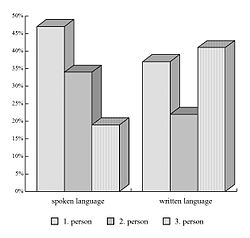This article has an unclear citation style .(March 2021) |
This article includes a list of general references, but it lacks sufficient corresponding inline citations .(December 2023) |
A word list is a list of words in a lexicon, generally sorted by frequency of occurrence (either by graded levels, or as a ranked list). A word list is compiled by lexical frequency analysis within a given text corpus, and is used in corpus linguistics to investigate genealogies and evolution of languages and texts. A word which appears only once in the corpus is called a hapax legomena. In pedagogy, word lists are used in curriculum design for vocabulary acquisition. A lexicon sorted by frequency "provides a rational basis for making sure that learners get the best return for their vocabulary learning effort" (Nation 1997), but is mainly intended for course writers, not directly for learners. Frequency lists are also made for lexicographical purposes, serving as a sort of checklist to ensure that common words are not left out. Some major pitfalls are the corpus content, the corpus register, and the definition of "word". While word counting is a thousand years old, with still gigantic analysis done by hand in the mid-20th century, natural language electronic processing of large corpora such as movie subtitles (SUBTLEX megastudy) has accelerated the research field.
Contents
- Methodology
- Factors
- Corpora
- Lexical unit
- Statistics
- Pedagogy
- Effects of words frequency
- Languages
- English
- French
- Spanish
- Chinese
- Other
- See also
- Notes
- References
- Theoretical concepts
- Written texts-based databases
- SUBTLEX movement 2
In computational linguistics, a frequency list is a sorted list of words (word types) together with their frequency, where frequency here usually means the number of occurrences in a given corpus, from which the rank can be derived as the position in the list.
| Type | Occurrences | Rank |
|---|---|---|
| the | 3,789,654 | 1st |
| he | 2,098,762 | 2nd |
| [...] | ||
| king | 57,897 | 1,356th |
| boy | 56,975 | 1,357th |
| [...] | ||
| stringyfy | 5 | 34,589th |
| [...] | ||
| transducionalify | 1 | 123,567th |



